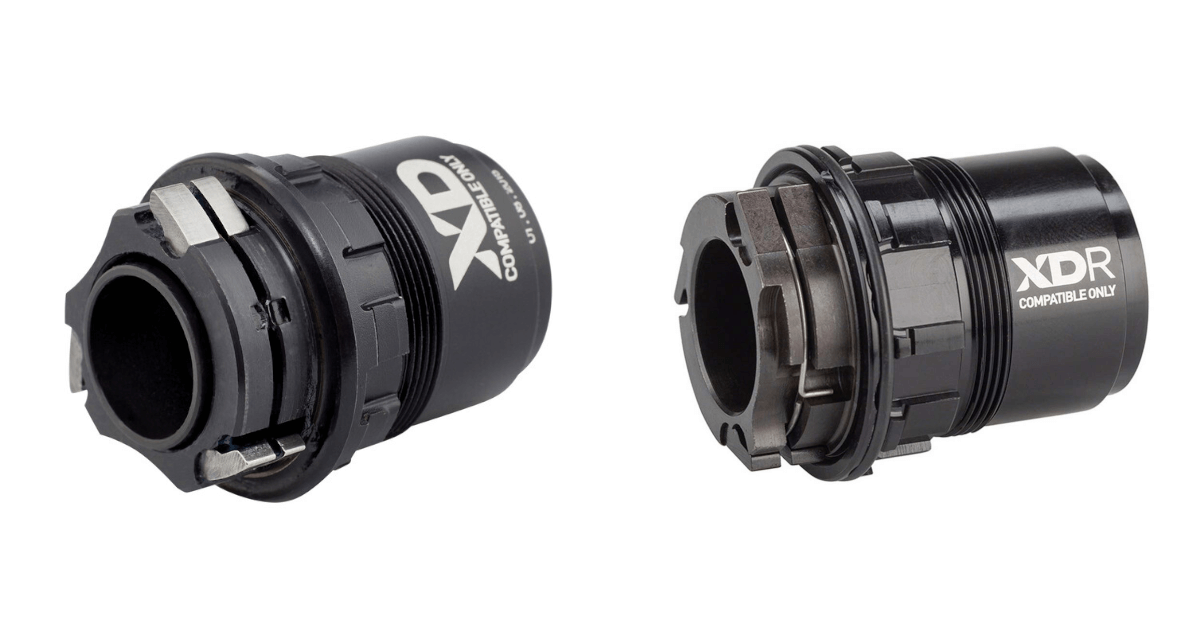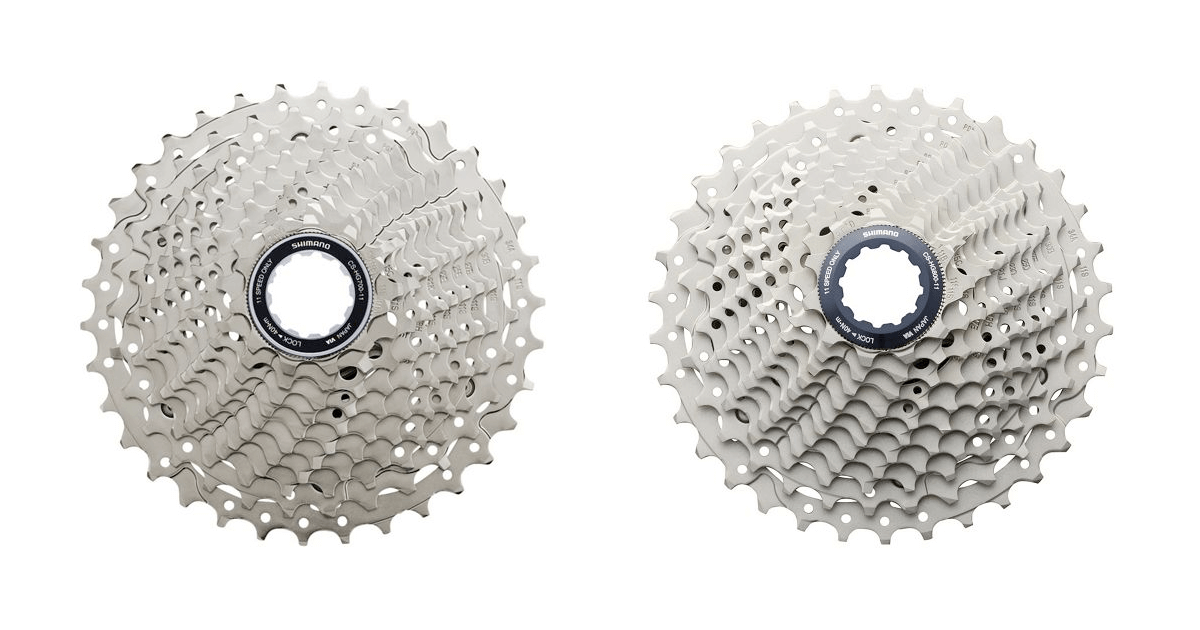Shimano ESSA Lineup and Compatibility with Existing 8-Speed Parts
An overview of Shimano's newly released 8-speed component group "ESSA" and its compatibility with existing 8-speed parts.
Posted at: Sep 12, 2022
The following is a summary of SRAM's proprietary XD and XDR standards, what makes them different from Shimano's, and what to look for when purchasing.

Table of contents
Sponsored Link
XDR and XD are SRAM’s proprietary freebody standards.
XD was originally developed as a 10-speed freebody for MTB when it was first released in 2015. Later, when the freebody height had to be increased to accommodate 11 speeds, it was necessary to increase the height of the freebody, but because it was designed for MTBs, it was made 11-speed by taking advantage of the high number of teeth on the low cog of the sprocket and extending it out toward the spokes. The same is also done by Shimano.

How to convert to 11-speed with a 10-speed wheel
This article explains how to convert your compo to 11-speed while keeping your existing 10-speed wheels, and how to tell the difference between 10-speed wheels and 11-speed wheels. Using this method, you can convert your wheels to 11-speed while making the most of the wheels you already have.
On the other hand, sprockets for road bikes at that time had a low maximum of 25T or 28T and could not be physically pushed out to the spoke side, so the XDR was developed to accommodate 11-speed sprockets for road use.
Therefore, XD and XDR have basically the same structure, but there is a difference in the height of the free body: sprockets for XD can be used with XDR free, but not vice versa.
The XD and XDR are characterized by the fact that they do not have splines throughout the entire conventional freebody, but only in the low several steps, and that they are threaded to connect the sprockets on top of them. Since the free body and sprockets are attached to each other by their own threads, conventional lock rings are no longer needed. As a result, the free body itself can be lowered, making the free body lighter.
Naturally, Shimano’s HG (Hyper Glide) standard sprockets, which are standard in Japan, cannot be installed.
As for the XDR, the biggest advantage is that it allows the selection of a minimum top gear of 10T. Shimano’s road-use components still have a minimum top gear of 11T even after the introduction of 12-speed, but SRAM’s road-use components are compatible with 10T.
The disadvantage of XD/XDR would be its low availability.
SRAM components are not that popular in Japan, and SRAM has always had many Shimano-compatible products, so they are not well known, but Mavic, DT Swiss, Fulcrum, and others sell XDR-free wheels or replacement free bodies.
However, in terms of distribution in Japan, the disadvantage is that very few products are actually sold and availability is low.
When buying XD/XDR wheels or a complete bike equipped with XD/XDR wheels, it is important to note that the wheels will be “fully SRAM assembled”.
SRAM 11-speed sprockets cannot be used in combination with Shimano 11-speed components because SRAM 11-speed and above are not compatible with Shimano. If the sprockets are not compatible with Shimano components, all other components around the drivetrain will also have to be SRAM.
SRAM itself is a manufacturer that produces excellent components, but the disadvantage is that they are not readily available in Japan. There are only a few of them available on the used market as well as new ones, and it is difficult to find the right parts.
In addition, XD and XDR wheels do not have high resale potential because they are not in very high demand. They can often be used by replacing the freebody with Shimano’s HG standard, but there are few compatible freebodies in circulation, and if the freebody costs more than $100, it would be realistic to trade them in for a sparrow’s eye price.
This is fine if you want to build a road bike with SRAM, but if you buy XDR standard wheels without knowing what you are getting into, you will be in for a world of pain.
Sponsored Link
Shimano ESSA Lineup and Compatibility with Existing 8-Speed Parts
An overview of Shimano's newly released 8-speed component group "ESSA" and its compatibility with existing 8-speed parts.
Compatibility Guide for SRAM MTB Components
A detailed explanation of compatibility between SRAM MTB components. This guide outlines which parts can be used together and which combinations are not compatible.
In-Depth Guide to Shimano 12-Speed Cassette Compatibility
A detailed explanation of the key compatibility factors when using Shimano's 12-speed cassettes—specifically the required wheel (freehub) and drivetrain, which differ significantly from previous 11-speed systems.
Perfect Guide to Shimano 11-Speed Cassette Compatibility
A detailed explanation of two key compatibility factors when using Shimano 11-speed cassettes: the required wheel (freehub) and drivetrain.
Perfect Guide to Shimano 10-Speed Cassette Compatibility
A detailed explanation of two key compatibility factors when using Shimano 10-speed cassettes: the required wheel (freehub) and drivetrain.
In-Depth Guide to Shimano 9-Speed Cassette Compatibility
A comprehensive explanation of two key compatibility factors when using Shimano 9-speed cassettes: the required wheel (freehub) and drivetrain.
Shimano CUES Components Lineup and Compatibility Guide
A comprehensive guide to Shimano's new CUES component group for MTB and lifestyle categories, including gear ratios, part lineup, and compatibility with traditional components.
TPU Inner Tube: Features, Pros, and Cons for Road Bikes and MTB
TPU inner tubes are gaining attention as the third force in bicycle tires. We summarize its features, advantages and disadvantages of using it on Road bikes and MTBs, and major manufacturers.
Shimano Mechanical Brake Levers for MTB and Hybrid Bike
Shimano mechanical brake levers are now few and far between. The following is a summary of the current model lineup, specifications, and compatible components.
Summary of electric components for MTB
This section summarizes the types of electric components for MTB and the advantages and disadvantages of each.
MTB Dropper Seatposts: Types and Considerations
The dropper seat post is becoming a "must-have" part for MTB. Here we summarize the lineup, specifications, and features of dropper seatposts for MTB from major manufacturers, as well as a comparison of each manufacturer and points to consider when choosing a dropper seatpost.
Freehub Types, Standards, and Compatibility for Road and MTB Wheels
A summary of the different types and standards of freehubs used in road and MTB wheels, along with their compatibility with various cassettes.
SRAM Component Grades and Compatibility Summary for MTB
This section summarizes the grades, features, and compatibility of SRAM's Eagle series of components for MTB, as well as the electric component AXS and the latest component, Eagle Transmission.
Choosing SRAM MTB Sprockets: Compatibility and Key Considerations
SRAM components are being increasingly adopted in entry-grade MTB. In this issue, we summarize SRAM's sprockets for MTB and points to consider when choosing one.
12-speed sprockets for MTB compatible with Shimano Free Hub(HG spline)
We have put together a 12-speed sprocket that is not part of Shimano's 12-speed lineup for MTB. With this one, it is possible to convert to 12-speed with a conventional Shimano Free Hub (HG spline) without upgrading the wheels.
MTB suspension fork interchangeability standard! You definitely want to check when replacing.
When it comes to serious MTB customization, suspension fork upgrades are the way to go. However, there are various standards for MTB suspension forks, and if you choose the wrong one, it may not work at all.
Shimano MTB sprocket and wheel compatibility summary
This section summarizes the compatibility of Shimano's sprockets and wheels (free bodies) for MTB, which are a mixture of old and new standards, the latest Micro Spline and the previous HG spline, and what to look out for when purchasing.
MTB End Standards: What to Consider When Buying
Detailed explanation of MTB end standards! What is the boost standard? What is the end width that fits your MTB, points to keep in mind when buying an MTB, etc.
MTB wheel standards and how to choose one without fail.
The following is an overview of MTB wheel standards, their compatibility, and how to choose the right wheel for you.
What is a Tire Insert? Advantages and Disadvantages
This section summarizes what tire inserts are and the advantages and disadvantages of using them, which have been attracting attention along with the spread of tubeless tires and have recently been used in professional road racing.